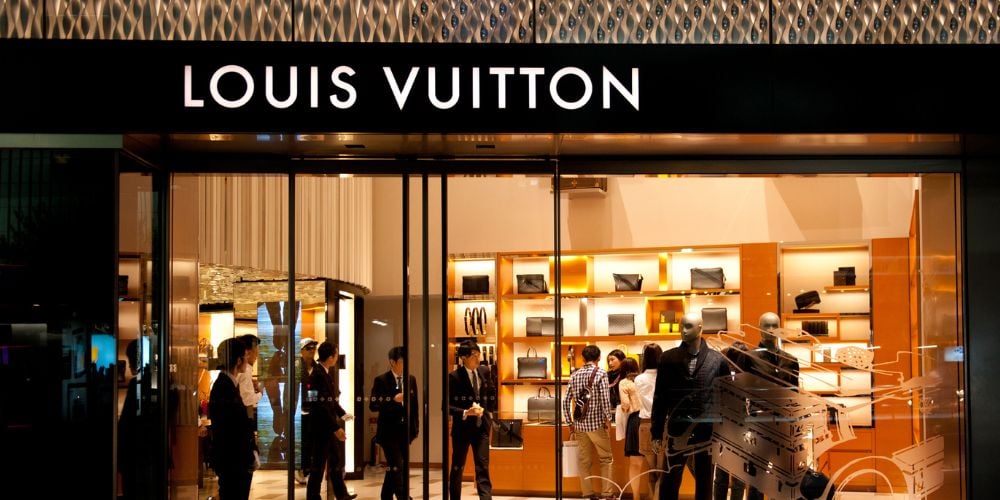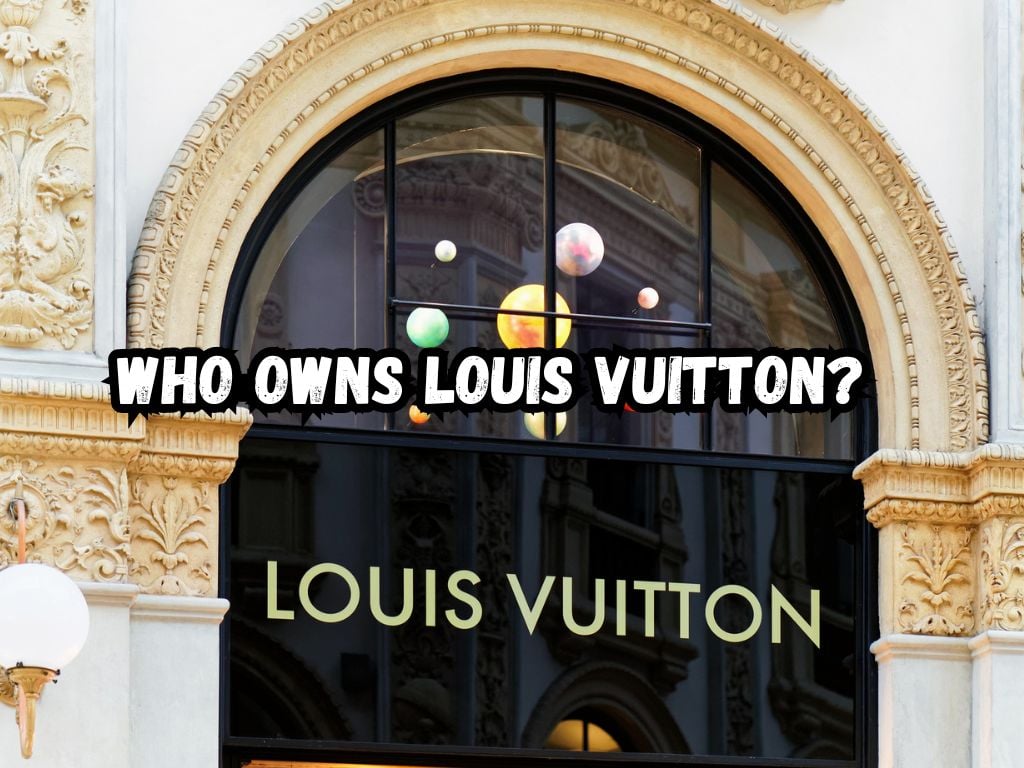Louis Vuitton stands as a globally recognized luxury brand, renowned for its iconic status in the fashion industry. Its products are synonymous with luxury, elegance, and superior craftsmanship.
Despite its widespread popularity, there remains a lingering curiosity regarding who owns Louis Vuitton and its parent company, LVMH.
In this article, we will delve into the fascinating story behind the birth of Louis Vuitton, the formation of LVMH Moët Hennessy Louis Vuitton, and the intricate details of the luxury conglomerate’s ownership.
The Birth of Louis Vuitton
The Founding Years
In the early years, Louis Vuitton began his journey as a trunk maker, dedicated to creating exquisite travel trunks that were known for their quality craftsmanship and durability.
Vuitton’s attention to detail and commitment to excellence laid the foundation for the brand’s long-standing success.
Vuitton’s Signature Monogram
Unique to the Louis Vuitton brand, the signature LV monogram swiftly became a recognizable symbol of luxury.
The monogram’s elegant design was not just a visual representation of the brand; it spoke volumes about Louis Vuitton’s innovative spirit and commitment to creating timeless designs that transcended trends.

The Formation of LVMH Moët Hennessy Louis Vuitton
The Merger
The merger between Louis Vuitton and Moët Hennessy paved the way for the creation of LVMH, one of the largest luxury conglomerates globally.
The merger took place in 1987, uniting the fashion and leather goods expertise of Louis Vuitton with Moët Hennessy’s esteemed reputation in the champagne and spirits industry.
Bernard Arnault: The Architect of LVMH’s Success
At the core of LVMH’s remarkable growth is Bernard Arnault, a visionary businessman who became the driving force behind the luxury conglomerate.
Arnault’s strategic decisions and keen eye for identifying promising brands have propelled LVMH to unparalleled success, solidifying its position as the world’s leading luxury powerhouse.
Who Owns Louis Vuitton? Exploring the Ownership Structure of LVMH
The Majority Ownership
The ownership structure of LVMH is chiefly dominated by Bernard Arnault’s personal holding company, Groupe Arnault, and the Arnault Family Group.
Through their combined stakes and controlling influence, Arnault plays a significant role in shaping the direction and decision-making process of LVMH.
While Bernard Arnault holds a majority stake in LVMH, the luxury conglomerate also has several institutional and individual shareholders with minority stakes.
Although their influence might be relatively smaller compared to Arnault’s, these shareholders do play a part in the governance and decision-making process of LVMH.
Controversies and Challenges
The Battle for Control
Given Louis Vuitton’s prestigious status as a luxury brand, it is not surprising that there have been legal battles and challenges surrounding its ownership and control.
These disputes mainly revolve around protecting the brand’s exclusivity and combating counterfeiting, which pose significant threats to its image and reputation.
The Succession Planning Dilemma
The question of succession arises as Bernard Arnault approaches the latter years of his career. Speculation abounds regarding who will take the reins and lead Louis Vuitton and the wider LVMH empire in the future.
The meticulous succession planning process becomes crucial to ensure a seamless transition and the preservation of the brand’s legacy.
Delving into the Historical Significance of Louis Vuitton’s Branding Techniques:
Monogram and Brand Heritage: Louis Vuitton’s iconic monogram, introduced in the late 1800s, played a pivotal role in establishing the brand’s identity and creating a sense of exclusivity.
Its intertwined “LV” initials became synonymous with luxury and craftsmanship.
Travel Trunks and Innovation: Louis Vuitton revolutionized the luggage industry by designing lightweight, sturdy travel trunks. These trunks featured innovative features such as airtight and waterproof closures, allowing clients to travel in style and comfort.
The brand’s commitment to cutting-edge design and functionality cemented its position as a leading luxury luggage manufacturer.
Celebrity Endorsements and Collaborations: Louis Vuitton’s collaborations with high-profile celebrities and designers, such as Stephen Sprouse, Takashi Murakami, and Virgil Abloh, have propelled the brand’s visibility and appeal across diverse markets. These partnerships have helped the brand maintain its relevance and appeal to younger generations of luxury consumers.

The Evolution of the Luxury Industry and Louis Vuitton’s Adaptation:
Changing Consumer Demands: Over time, luxury consumers have shifted their preferences towards experiential purchases, personalization, sustainability, and digital engagement.
Louis Vuitton has embraced these changes by offering personalized services, limited edition collections, sustainable initiatives, and digital innovations, such as augmented reality experiences and online shopping platforms.
Expansion and Diversification: Louis Vuitton’s ability to expand its product lines beyond travel trunks to include ready-to-wear clothing, accessories, footwear, fragrances, and watches has allowed it to cater to a wider range of consumer segments.
This diversification strategy has contributed to the brand’s resilience and growth in the ever-changing luxury market.
Global Footprint and Retail Strategy: Louis Vuitton’s extensive retail network, with flagship stores in prominent cities worldwide, has positioned the brand as a top destination for luxury shoppers.
The establishment of strategic partnerships with high-end department stores and the utilization of e-commerce platforms has also strengthened the brand’s presence in both traditional and digital retail spaces.
Highlighting Louis Vuitton’s Market Position and Contribution to LVMH’s Revenue:
Market Position: According to Interbrand’s Best Global Brands ranking, Louis Vuitton consistently ranks as one of the world’s most valuable and iconic brands.
Its market value, strong customer loyalty, and global recognition have solidified its position as a market leader in the luxury industry.
Contribution to LVMH: Louis Vuitton constitutes a significant portion of LVMH’s overall revenue. As of 2020, Louis Vuitton accounted for approximately 50% of LVMH’s Fashion & Leather Goods segment’s revenue, generating billions in sales annually.
Continuous Growth: Despite economic downturns and global challenges, Louis Vuitton has consistently achieved year-on-year growth in revenue.
Its ability to cater to a diverse consumer base, penetrate new markets, and maintain the allure of its brand image has contributed to its ongoing success.
Frequently Asked Questions
Does Louis Vuitton belong to a French company?
Yes, Louis Vuitton is under the umbrella of LVMH, which is a French luxury conglomerate. The brand’s French heritage is deeply ingrained in its values and reflects the country’s rich tradition of luxury craftsmanship.
Are there any other luxury brands under the LVMH umbrella?
LVMH encompasses a vast array of prestigious luxury brands beyond Louis Vuitton. Some notable examples include Christian Dior, Givenchy, Fendi, and TAG Heuer, among others. This diversified portfolio allows LVMH to cater to various consumer preferences and maintain its dominant position in the luxury market.
How do the ownership changes affect the brand’s identity and direction?
Ownership changes within LVMH can have an impact on Louis Vuitton’s identity and direction, as they may influence strategic decisions and resource allocation. However, the brand’s unwavering commitment to quality, exceptional craftsmanship, and timeless design ensures that it retains its core values regardless of ownership shifts.
Conclusion
Louis Vuitton’s journey from a trunk maker to a global luxury brand is a testament to its enduring legacy. Under the ownership of LVMH, led by Bernard Arnault, the brand continues to thrive and redefine luxury in the modern era.
As we explore the ownership structure of Louis Vuitton, we realize that while ownership may change, the brand’s commitment to excellence and its iconic status in the fashion world remain unwavering.


 Tags:
Tags:










